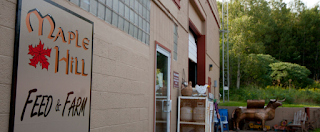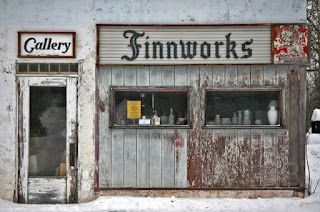Yesterday my
disgruntled feelings disturbed me enough to take a step back (2,000 miles from
here) & take another look at what I’m doing … or at least how I’m doing
it. In my exercising, I go into a
timeless, mindless trance, since there’s no pleasant scenery available. And in my virtual travel, I plop down in my
designated stopover place & take a look around. I try to get a street-level view of what this
particular place is like. The early
photos that I chose were roadside cafes, the road stretching toward the Cascade
Mountains, & mountain tunnels.
My first
real shock was when I posted pictures for Monarch, Alberta (Dec 6, 2015). It was a declining town, and the only
pictures I found were of abandoned buildings.
I felt that I was doing a disservice to the town to focus on those &
disregard the living residence. That’s
when I started doing some research into each place to be able to provide a
little more balanced view of what I saw from my virtual roadside.
I don’t want
to be unhappy with a place for not offering what I had hoped for. I thought that I would do well to “arrive”
without expectations. But I still
carried expectations of making serendipitous discoveries. And I have!
But now I will also add another level of regional research. I think that if I get a general view of the
region I’m entering, then I can look for specific examples in each specific
place. Then my specific discoveries will
add up to my own general view of each region.
 |
| proposed state |
I’m taking a
look at the Upper Peninsula of Michigan & the neighboring area of
Wisconsin, which some people have said should be a separate state (bombastically
named “Superior”). Residents became
known as U.P.-ers, which turned into “Yoopers”.
Many of them feel that they have a stronger connection with the
peninsula and its 2 Great Lakes than with the people in the southern mainland
parts of their designated states.
The peninsula
is divided between the steep, rugged western half, called the Superior Upland, and
the flat, swampy areas in the east. The
rock in the western portion is the result of volcanic eruptions and contains
the region's iron and copper ore resources.
In 1837, when
Michigan’s two peninsulas officially became a state, the land in the Upper
Peninsula was described in a federal report as a "sterile region on the
shores of Lake Superior destined by soil and climate to remain forever a
wilderness."
 |
| ice-strewn shore of Lake Superior |
Lake
Superior has the greatest effect on the area, especially the northern and
western parts. Winters are long and
harsh. Lake-effect snow causes many
areas to get more than 100–250 inches of snow per year, making the western U.P.
a part of the Midwestern snow belt. I
guess that spring is in the air, because in the coming week, both snow and rain
are predicted.
 |
| old Michigan copper mine works |
Because of
the long harsh winters, the land and climate are not very suitable for
agriculture. Abundant iron and copper
deposits were discovered in the 1840s, and the Upper Peninsula's mines produced
more mineral wealth than the California Gold Rush.
 |
| small log truck |
The land is heavily forested and the economy
has been based on mining and logging, but mining has been in decline since the
1920s. Logging remains a major industry,
and outdoor tourism flourishes. About
one third of the peninsula is government-owned recreational forest land,
including the Ottawa National Forest and Hiawatha National Forest.
In some
areas, the population has declined more than in others, with the six
westernmost counties having lost about half their population since 1920. Some ghost towns exist in the region.
Large
numbers of French Canadian, Finnish, Swedish, Cornish, and Italian immigrants
came to the Upper Peninsula to work in the mines and logging camps. Yoopers speak a dialect influenced by
Scandinavian and French-Canadian speech.
The peninsula includes the only counties in the United States where a
plurality of residents claim Finnish ancestry.
 |
| Cornish pasty ("pass-tee") |
And there's interesting food to try out! Before I
discovered recipes for Saskatchewan & Manitoba, I forgot to look for
distinctive regional food. In Minnesota,
I discovered and experimented with hotdish.
On the Upper Peninsula, I’ll be on the lookout for distinctive local
cuisine. Because I’m “intolerant” of
dairy foods, I thought that I couldn’t appreciate the cheesiness of mainland
Wisconsin & Michigan specialties.
But the U.P. offers an interesting variety of foods. The immigrant miners from Cornwall brought
with them the pasty, a hand-held meat turnover. I’ll also be looking for “potato sausage”, a
Finnish ring-bologna sausage, and cudighi (a spicy Italian meat). Finnish immigrants contributed a
cardamom-flavored sweet bread (nisu), a custardy pancake (pannukakku), and hard
slices of toasted cinnamon bread dipped in coffee (korppu).
 |
| thimbleberries |
The Seattle area, where I physically live, has
a strong Scandinavian ethnic presence, so I may be able to find some of these
items in specialty shops here. I can
look for U.P. restaurants with these foods on the menu, but it might be more
satisfying to search the internet for recipes, and try to make some
myself. It should come as no surprise to
find that maple syrup is produced in this area.
And fresh Great Lakes fish, such as the lake trout, whitefish, and
spring smelt are widely eaten. I had
heard of chokecherry, although the name never tempted me to try it. And what is a thimbleberry? As obscure and locally specific as our
Pacific Northwest salmonberry, I expect.
Wisconsin
and the four western Michigan counties bordering it are in the Central Time
zone, but most of the Upper Peninsula observes Eastern Time. That takes me by surprise. Crossing into Eastern Time will feel like a
milestone on my journey.
info: Wikipedia.com
images: Google Images


















































